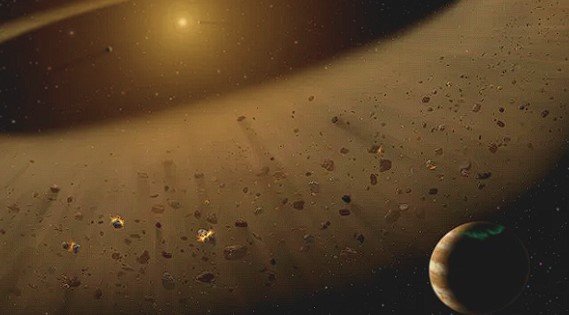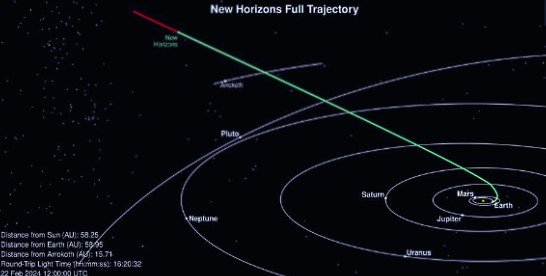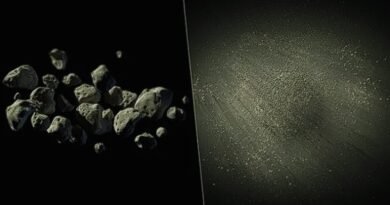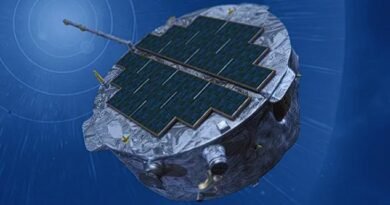Kuiper Belt Expansion Could Redefine Cosmic Geography

Explore the possibility of an expanded Kuiper Belt challenging current solar system maps, suggesting a reevaluation of our understanding of the outer reaches of our cosmic neighborhood.
In a groundbreaking revelation, it appears that the Kuiper Belt stretches far beyond previous estimates, potentially harboring more mysteries than previously imagined. NASA’s New Horizons mission, renowned for its historic encounter with Pluto in 2015, is currently navigating the depths of the Kuiper Belt and has stumbled upon a significant discovery: a cosmic dust storm hinting at hidden phenomena within our solar system’s outer reaches.
Space is teeming with dust particles, some as tiny as microns, remnants from the chaotic formation of our planetary system. This ancient dust, coupled with fresher debris from asteroid and comet surfaces, contributes to the enigmatic “Zodiacal light” phenomenon and extends to the outermost regions of the solar system, including the Kuiper Belt. Despite strides in understanding, astronomers continue to unravel the mysteries of this remote frontier.
Initially theorized by astronomers Gerard Kuiper and Kenneth Edgeworth, the Kuiper Belt remained elusive until the groundbreaking discovery of the first Kuiper Belt Object (KBO) in 1992 by University of Hawaii astronomers Dave Jewitt and Jane Luu. Since then, the identification of thousands of KBOs has greatly aided in mapping the outer solar system.
Beyond the Kuiper Belt lies the Scattered Disk, home to KBOs perturbed by Neptune’s gravitational influence. These objects boast highly elliptical and inclined orbits, extending hundreds of astronomical units (AU) from the sun. Further out lies the Oort Cloud, a vast sphere of frozen bodies extending over a light-year from the sun.
New data from New Horizons challenges existing perceptions of the outer solar system. Contrary to expectations, observations from the spacecraft’s Venetia Burney Student Dust Counter (SDC) suggest a sustained presence of interplanetary dust beyond the Kuiper Belt’s edge. This unexpected anomaly raises questions about previously unknown dust production mechanisms or the possibility of a significantly larger Kuiper Belt.

Augmented by machine learning algorithms, analysis of telescope data has furthered exploration, unveiling additional icy objects along New Horizons’ trajectory. Some of these objects, situated beyond the Kuiper Belt, prompt speculation about the existence of an extended Kuiper Belt or even a second belt altogether.
New Horizons’ unparalleled journey, equipped with advanced instruments like the SDC, promises to redefine our understanding of the outer solar system. With ample fuel and power, the spacecraft is poised to continue its groundbreaking exploration well into the 2040s.
These recent findings, detailed in the Astrophysical Journal Letters, underscore the ongoing quest to unravel the mysteries of our solar system’s distant realms.








